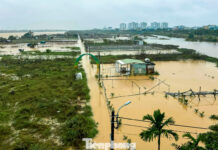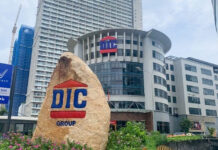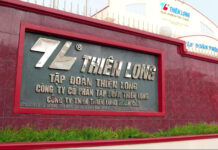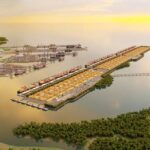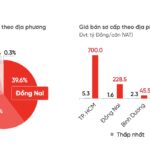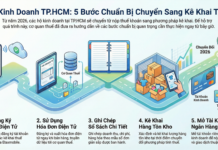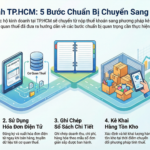Ho Chi Minh City has unveiled plans to develop its logistics infrastructure, aiming to increase cargo handling capacity and establish world-class logistics service centers. In the context of globalization and rising cargo transportation demands, the city is focusing on constructing eight significant logistics hubs, expected to be completed by 2030. This move is considered a driving force for economic development, not only for Ho Chi Minh City but also for the entire Southeast region of the country.
This economic powerhouse prioritizes projects that apply Industry 4.0 technologies, digital transformation, green transition, and renewable energy utilization.
By 2045, Ho Chi Minh City envisions logistics as a leading industry, with high added value and international competitiveness. The city aspires to become a global logistics service hub by that time.
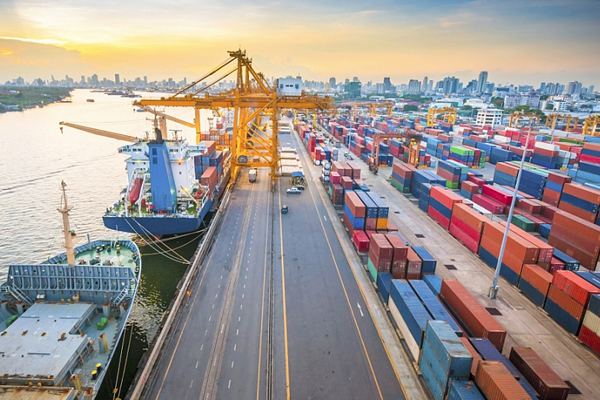
Cat Lai Logistics Center (Thu Duc City): This center will serve as an international trade and logistics hub, receiving cargo from the provinces of Dong Nai, Binh Duong, Ba Ria – Vung Tau, Binh Phuoc, Ho Chi Minh City, and the Mekong Delta. The project is divided into two phases: Phase 1, covering an area of 60-100 hectares in Thanh My Loi Ward, with a clearance capacity of 3.1-3.5 million TEU; and Phase 2, located in Phu Huu Ward, spanning 26 hectares and offering a clearance capacity of 800,000 TEU.
Linh Trung Logistics Center (Thu Duc City): Expected to cover an area of 40-50 hectares, this center will be a strategic import-export hub, facilitating cargo movement from major industrial zones in the Southeast region. The project will also involve developing an extended airport, boosting the distribution of import-export goods via air freight.
Long Binh Logistics Center (Thu Duc City): Directly linked to Cai Mep Port and other port clusters in the Southeast region, this center is built on a 50-hectare area, with a clearance capacity of 750,000-800,000 TEU. It will serve as a crucial transshipment point for industrial zones in Dong Nai, Binh Duong, and Tay Nguyen.
Designed to be a distribution hub for domestic goods, especially agricultural and cold chain products from the Mekong Delta, the Tan Kien Logistics Center (Binh Chanh District) will span 60 hectares and is expected to clear 500,000 TEU annually.
Connected to the Cu Chi dry port and inland waterway port, the Cu Chi Logistics Center (Cu Chi District) is planned to cover an area of 10-15 hectares, with a clearance capacity of 282,150-319,770 TEU. It will primarily serve cargo from the northern industrial zones of Ho Chi Minh City and neighboring provinces such as Binh Duong and Binh Phuoc.
The Dry Port – Logistics Center in the High-Tech Park (Thu Duc City): With an area of 5-6 hectares, this center will specialize in handling cargo from the high-tech park and surrounding areas. The estimated clearance capacity is 60,000 TEU per year, focusing on extended airport services.
After 2030, Ho Chi Minh City plans to develop the Tan Hiep Logistics Center (Hoc Mon District) with an area of 150 hectares to facilitate cargo transportation from the northern region of the city and neighboring provinces such as Long An and Tay Ninh. The center will connect to Ho Chi Minh City and Cai Mep ports, clearing approximately 1.5-1.6 million TEU.
Ho Chi Minh City currently leads in the Provincial Logistics Competitiveness Index (LCI) released by the Vietnam Logistics Services Enterprises Association (VLA), the Vietnam Logistics Research and Development Institute (VLI), and Dream Incubator (DI) last year.
The city is home to approximately 9,600 logistics service businesses, accounting for 36.7% of the country’s total. In terms of infrastructure, the city boasts Tan Son Nhat International Airport, which records the highest number of take-offs and landings nationwide, with approximately 260,000 flights and 42 million passengers (exceeding its designed capacity) in 2023.
According to data from Ho Chi Minh City’s Statistics Bureau, in the first eight months of the year, the total revenue from logistics services reached nearly VND 289,400 billion, a 37.5% increase compared to the same period last year. Specifically, cargo transportation increased by 12.3%, while warehousing and transportation support services grew by nearly 54%.
This year, the city aims for an economic growth rate of 7.5-8%. To achieve this target, Ho Chi Minh City has outlined several solutions to boost public investment and consumer services in the second half of the year.
By 2030, the logistics services industry is expected to contribute more than 8.5% to the city’s GRDP. The revenue growth rate of logistics enterprises is projected to reach 15%-20% annually. Notably, the outsourcing rate of logistics services is estimated at 12%-15% of GDP, improving Vietnam’s ranking in the global LPI (Logistics Performance Index) to 45th place.
In conclusion, the simultaneous development of these eight logistics hubs in Ho Chi Minh City will not only enhance cargo transportation capacity but also boost the regional economy and improve international competitiveness. These strategic moves position Ho Chi Minh City for sustainable development, solidifying its role as a pivotal logistics hub in Vietnam and Southeast Asia.
The Ultimate Drive: Gumball 3000’s Inaugural Journey to Vietnam – A Convoy of Over 100 Supercars, Traversing 5 Nations, with Celebrities Galore
Alongside providing entertainment, Gumball 3000 demonstrates its commitment to community and charity by organizing a special auction to raise funds for relief efforts in Northern Vietnam, which has been impacted by natural disasters.
Deputy Prime Minister: Comprehensive Environmental Impact Assessment of the Can Gio ‘Mega Port’
As the Can Gio port project is associated with Vietnam’s first-ever World Biosphere Reserve, it holds immense value and significance for Ho Chi Minh City and the region. Due to its potential environmental implications, Deputy Prime Minister Tran Hong Ha has emphasized the need for a thorough and comprehensive assessment of its environmental impact.
The Metro Township and Villa Market in Ho Chi Minh City: Dong Nai Takes the Lead in Supply, with Transactions Focusing on Properties Priced Below VND 10 Billion per Unit.
In DKRA Group’s Q2 2024 report and recent updates, we uncover the latest trends in the suburban house and villa market, just outside Ho Chi Minh City.





